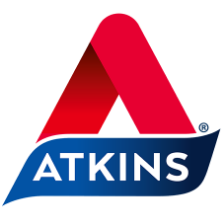- Get inspired
- Atkins Blog
- Here is what you need to know about Fat
Here’s what you need to know: the different types of fats, what fats to avoid, how much you should eat, and some recipe and cooking ideas.
Fat is a key source of energy and essential nutrients, and you can’t live without it. But all fats aren’t created equal. Nuts, olive oil and fish can help protect us from certain diseases while low-fat and fat-free foods might be worse for us than the full-fat options. Replacing sugars and refined carbohydrates (the main components of all those low-fat and fat-free foods) may have actually contributed the twin epidemics of obesity and diabetes we are experiencing today.
Types of Fats
- Monounsaturated fats (MUFAs) are found in olive oil, canola oil, and in walnuts and most other nuts, as well as avocados. MUFAs are usually liquid at room temperature.
- Polyunsaturated fats (PUFAs) are always liquid both at room temperature and in the refrigerator. They’re found mostly in oils from vegetables, seeds and some nuts. Sunflower, safflower, flaxseed, soybean, corn, cottonseed, grape seed and sesame oils are high in PUFAs. So are the oils in fatty fish such as sardines, herring and salmon.
- Essential fatty acids (EFAs) are two families of compounds of dietary fats that your body can’t produce on its own. Both omega-3 and omega-6 EFAs are PUFAs essential to your health and well-being. Omega-3s are found in the fat of shellfish and cold-water fish. Omega-6s are found primarily in seeds and grains, as well as in chickens and pigs. Unless you’re eating a very-low-fat diet, you are most likely getting more than the recommended amount of omega-6s. . Focus on the right balance of PUFAs: Eat foods or take supplements rich in omega-3 fatty acids, such as shellfish, cold-water ocean fish and fish oil (salmon, tuna, sardines, herring and anchovies, as well as non-fish sources such as flaxseed, almonds, walnuts and canola oil). Use sparingly corn, soybean, cottonseed and peanut oils, which are all high in omega-6s.
- Saturated fatty acids (SFAs) tend to remain solid at room temperature. Butter, lard, suet and palm and coconut oils are relatively rich in saturated fats. This type of fat is fine to consume on an Atkins-type diet because we know that the body burns primarily fat on Atkins and we know from published research that the level of saturated fat in the blood when you are following Atkins does not increase.
- Trans fats should be avoided at all costs. An increased intake of trans fats is associated with an increased heart attack risk, and they have been shown to increase the body’s level of inflammation. They are typically found in foods you should be avoiding already, including fried foods, baked goods, cookies, crackers, candies, snack foods, icings and vegetable shortenings. To be sure there are no trans fats in a product, check the list of ingredients, where trans fats are listed as “shortening” or “hydrogenated vegetable oil” or “partially hydrogenated vegetable oil.” If you see any of these words in the ingredients list, just say no. You should also avoid deep-fried foods in fast food and other restaurants.
How much should you eat?
Although there has been a fat-friendly shift lately, with more research showing that dietary fat is not the enemy it was once thought to be, it is important to remember that if you consume too much of anything, whether it be three “healthy fat” 500-calorie avocados or a box of donuts packed with trans fats in one sitting, you will gain weight.
When doing Atkins, you should consume three servings of added healthy fats a day (in addition to the fats you get from protein and dairy). Here’s how you can add healthy fats into your daily meals and snacks:
- Toss veggies with extra-virgin olive oil and use it to make salad dressings.
- Cook with canola and most nut oils, butter or coconut oil.
- Top veggies and other foods with butter.
- Have two to three weekly servings of fish and/or shellfish
- Snack on olives and avocados and include them in salads.
- Snack on nuts and seeds and use them as garnishes.
Remember to balance out your meals with a rainbow of colors of produce—a wide range of colors ensures you’re getting plenty of vitamins, minerals, antioxidants and fiber.

Atkins Nutritionist



